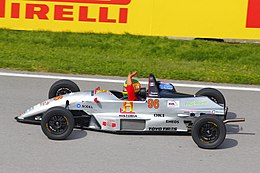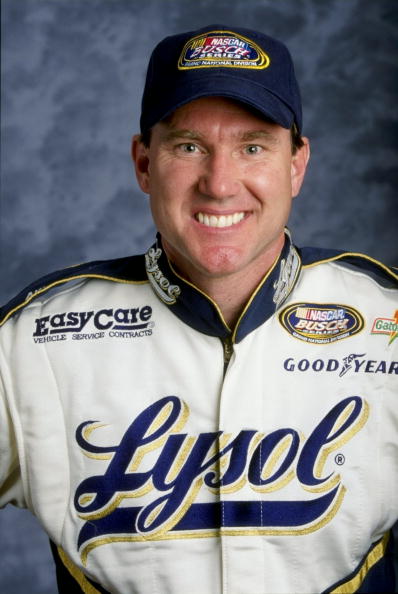Home; Shelby, North Carolina, USA.
Named Gene Daves, aka Stick Elliott after his Grandfather whom was a railroad security officer raised him in Lawndale NC. He would take little Gene with him to work. The hobos on the trains would see Mr Elliott coming & say, "here comes that big man with that big stick, & he has that 'little stick' with him ". Thus the nickname "Stick'.
A true master of the dirt, he sold all his land and belongings in the early 60`s to go NASCAR racing and when he came back to the local dirt scene, terrorized the area with 106 wins in the Toy Bolton #18 55 Chevy & was asked by Ralph Earnhardt to drive his # 8 Chevelle while Ralph recoverd from a heart attack. The two later became teammates, but would spin each other out if given the chance, leaving the fans in a frenzy.
It is said that Dale Earnhardt picked up a lot of his driving style from "The Big Stick". Before his death, Dale was know to tell tales of his short track battles with Stick, and some in the know knew that Dale may have embellished the finish of some of those Friday & Saturday night battles as Stick was the man to beat any night when a young Dale Earnhardt was running the dirt tracks.
In 1962, at the age of 27, Elliott made his debut in the NASCAR Grand National Division driving Toy Bolton’s No. 18 Ford at Concord Speedway. Elliott’s debut in the bigs did not work out like he had dreamed as he was eliminated from competition on lap 48 after being collected in a crash. He was credited with a 17th place finish and collected $33. Two months later, Elliott recorded a eighth-place finish in the Greenville 200 at Greenville-Pickens Speedway. He recorded a seventh-pace finish in the Dixie 400 at Atlanta International Raceway. He closed the 1962 NASCAR Grand National season with 21 starts in the 53-event season and charted two top-ten finishes.
In 1963, Elliott competed in 28 of the years 55 NASCAR Grand National events. He finished sixth in the Nashville 400 at the Nashville Fairgrounds Speedway driving Toy Bolton’s No. 18 Pontiac. Despite 14 DNFs, Elliott recorded seven top-tens.
In 1964, equipment failures marked Elliott’s seven Grand National starts. Mechanical failures caused him DNFs in all seven events. 1965 was not much better as he made 15 starts and suffered through ten DNFs. When the equipment held up, Elliott ran up front. He finished second in the Pickens 200 at Greenville-Pickens Speedway, fourth in the 200-lap event at Valdosta Speedway, and seventh in the Southern 500 at Darlington.
1966 was another season of the frustration of mechanical failures. Elliott started 19 NASCAR Grand National events and had 13 DNFs. He had a fourth place finish in the Pickens 200, and eighth place finishes in the Fireball 300 at Asheville-Weaverville Speedway and in the Volunteer 500 at Bristol.
Elliott made only one event in the 1967 season, the World 600 at Charlotte. He recorded a 14th place finish in Bolton’s No. 47 Chevrolet. His final appearance in NASCAR Winston Cup Series competition came in 1971. He made two starts that year driving O. L. Nixon’s No. 31 Dodge. Mechanical failure dropped him out of the National 500 at Charlotte, and he finished 20th in the American 500 at Rockingham.
Despite a lack of funding and inferior equipment, Stick Elliott made 93 starts in seven years in NASCAR’s premier division and recorded three top-fives and 15 top-tens. Elliott continued to compete on the North Carolina dirt tracks on into the 1980s driving O.L. Nixon’s No. 57 Chevrolet Malibu and Camaro. He earned a reputation over his career as a hard-nosed racer who did not mind using his front bumper to move someone out of his way.
Stick Elliott died November 1, 1980 from a little known disease, Cryptoccocal Meningitis, from dust in the dirt that was delivered to his yard that was taken from a chicken farm. Humans are exposed to it everyday and there is no known cure & no reason why more don`t get it. It remains a puzzle how such a big man coud be struck down in his prime by such a little known virus.
.jpg)


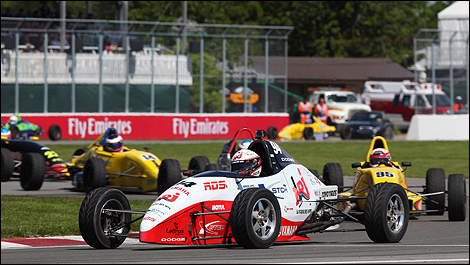






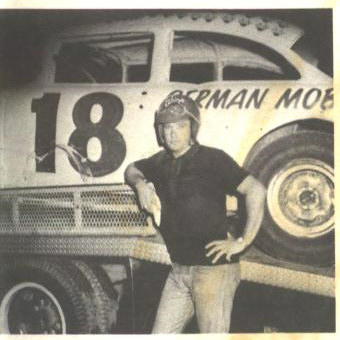
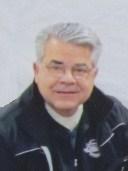



.jpg)


